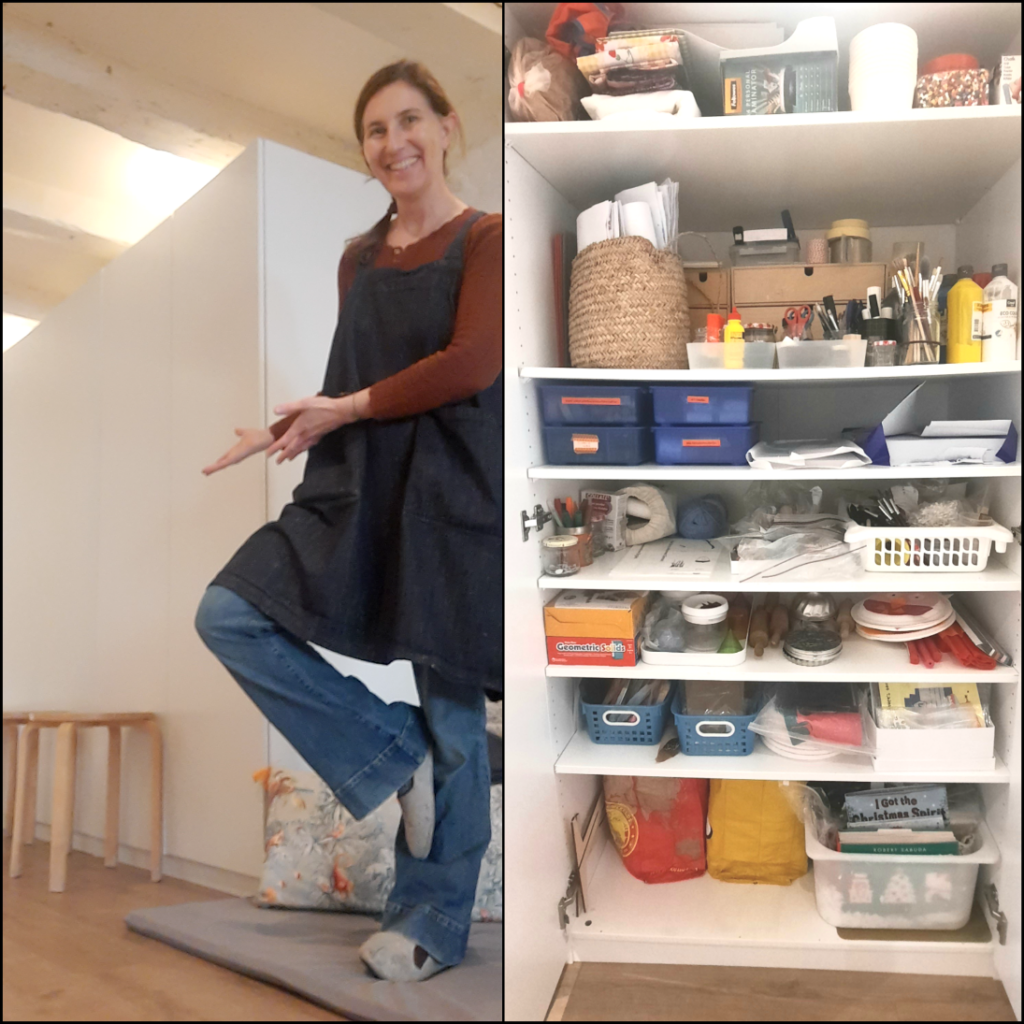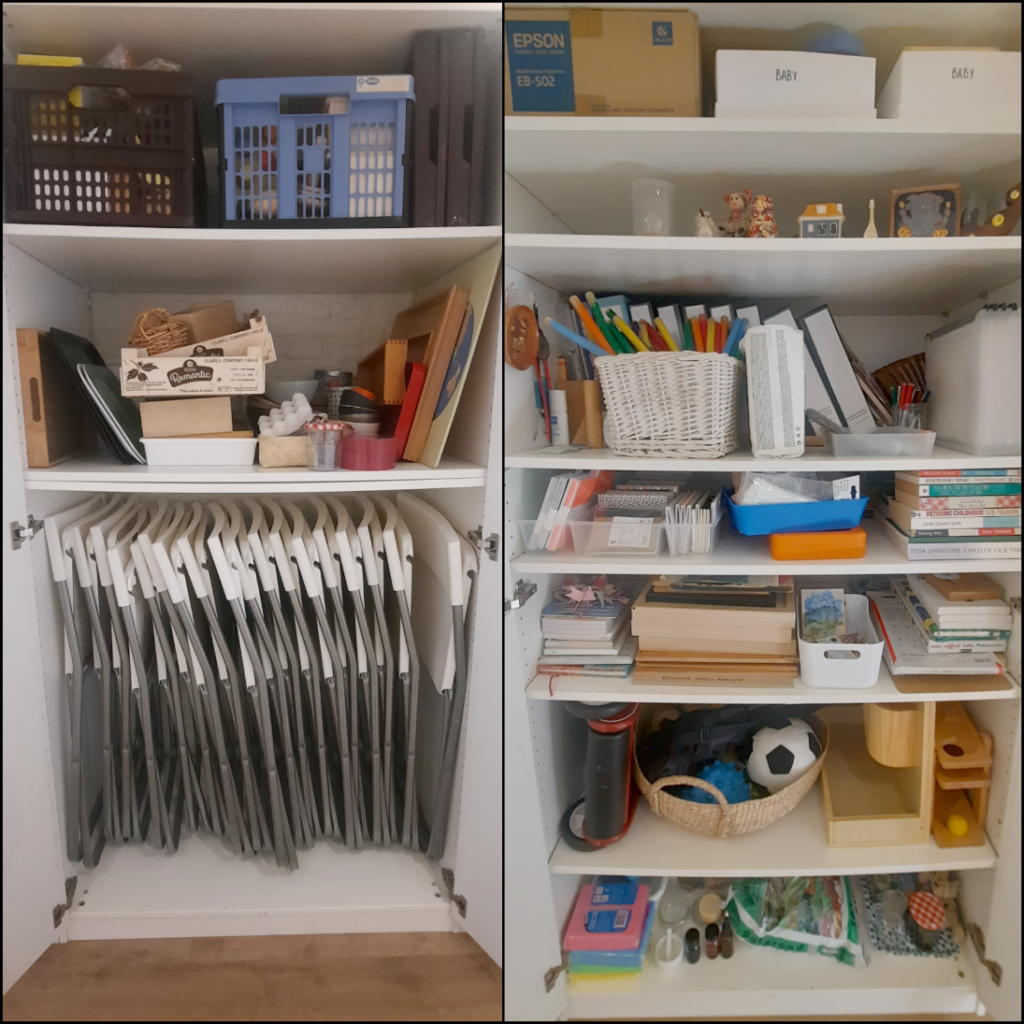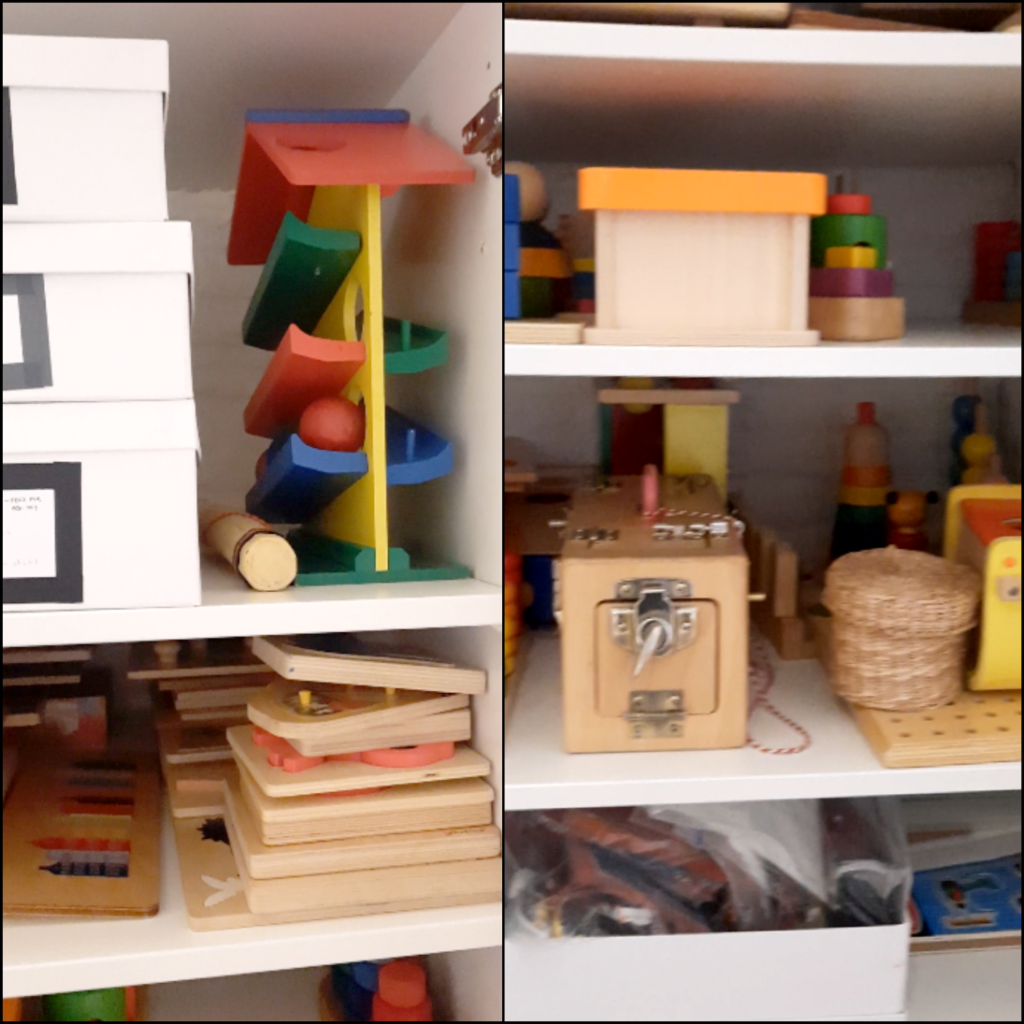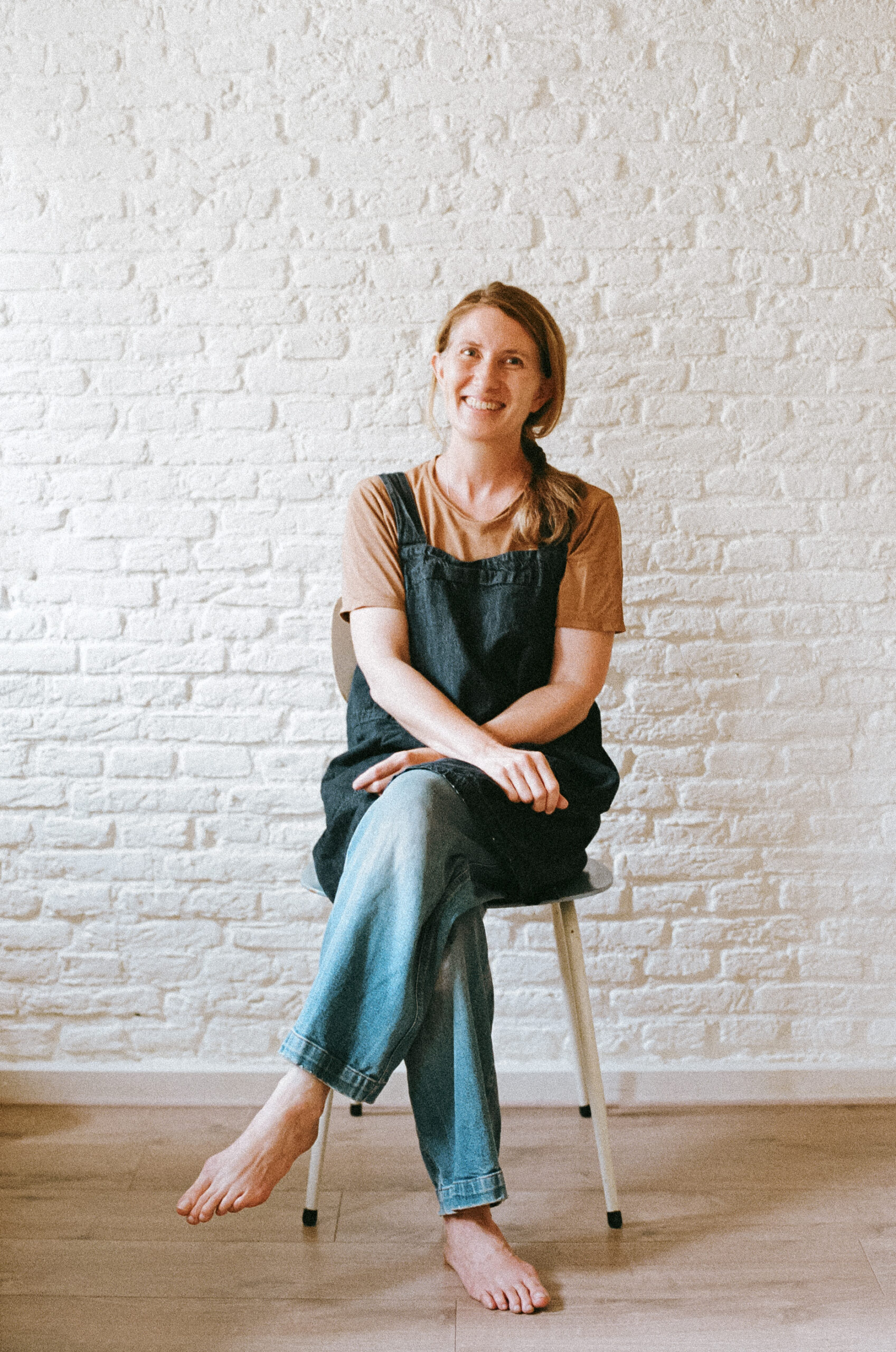Montessori storage and toy rotation
Well it turns out that we love to talk about Montessori storage and toy rotation. Folks want to know where to put the things that we aren’t using and how to contain the chaos.
I’ve tried a lot of options over the years, but I am finally at my dream storage solution and happy to share.

What didn’t work so well…
Back in 2008 in my first classroom I had one small storage cupboard and everything had to be carefully balanced on top of each other or the Jenga-like tower would fall. Which made going in there a scary prospect and made switching out things far more difficult than it should have.
In 2009 we moved into a lovely large space but it was all open plan and there was not even a cupboard to store things. So a shower became the store room and a baby gate and shower curtain was as fancy as it got to keep things out of view. Then I added two white IKEA PAX cupboards to blend in with the classroom walls for things that were in regular use.
In 2016 we moved to a location with a separate store room and an attic space! I thought I was living the dream. The downside of more storage is that I held onto things we no longer needed or used and more becomes just more.
What is working…
Last year we moved location again (hopefully for the last time!) and there was no storage in the space. A simple long space with a kitchen on the side.
So I had to come up with my own storage and I can tell you it makes my life so much easier. This dream storage is made up of 4 white IKEA PAX cupboards (2 new ones, and the 2 old ones) which blend into the white walls. The main reason it works like a dream is because there is a place for everything and everything is in its place. The same principle we apply to everything in our Montessori homes and classrooms.
Some examples:
- all the art supplies go on their shelf, the paint in its spot, extra paint brushes in old glass jars
- when things get broken I have a place to store them until they get repaired
- I have white cardboard boxes (similar to shoe boxes) containing smaller activities like threading, sorting, small objects, musical instruments etc
- I have large crates for storing baby and preschooler materials that are not currently being used
- I have a lot of shelves so that things do not need to be stacked on top of each other
So let’s go step by step and help you to arrange your storage at home.

Why storage is useful in a Montessori home (or classroom)
When you come into a Montessori space, the idea is to have activities attractively displayed on open shelves so the child/ren can see what is available. There are limited activities available so that we only have out what the child/ren is actually working to master or interested in right now. So less out will be more. This will help their concentration, engagement, and creativity.
Which means that the things that are not being used, instead of throwing them in a toy box which can turn into a black hole, it’s ideal where possible to create some easily accessible storage for our Montessori materials.
When we can organise our storage, it is easy to find things, to change things as needed, to keep track of all the small parts, and to put things away which are not being used.
Toy rotation – when to rotate toys
Honestly when my children were toddlers I would rotate materials once a week. I would not put everything away and take out completely different things; I would keep out the things that were being used often and rotate out some news things. They were always super excited to see the things that I brought out and I feel really gave them longevity out of the activities in our home, they stayed in good condition, and there were very few missing parts.
However, the true Montessori answer to when to rotate toys is based on observation. If something is being thrown, for example, it’s often too easy or too hard. So I would put it away and choose something that would follow what my child is working on right now.
Look for the types of activities they are practising and perhaps add a more difficult variation. If they are deep-diving into an area of interest – like vehicles or animals or art – then we can look to provide activities that engage them in different ways around this interest. For example, a puzzle of animals, some animal figurines, books about animals, arrange a trip to see baby animals being born etc. See this post for more.
I try not to make too many changes at once. Babies like to have points of references to help them to orient and toddlers in particular have a strong sense of order and it may be too much if everything changes at once.
Older children may like to help with the toy rotation. If they want something to come out of storage I ask them what they would like to put away instead.

10 tips for great storage at home
1. Organise by type and/or by age. Having similar things together or by age group has been the most effective way for me to store things. I can put all the baby materials into a crate as they are small and not too bulky. I can put musical instruments into a couple of shoe boxes to store and rotate what is out. I have puzzles stacked neatly on top of each other on one shelf of the cupboard. I have art supplies all together in one area in the cupboard to refill the art station. Then when I see that something needs to be rotated, it’s easy to put away one and pull out something new.
2. Make the storage as discrete as possible. One way to make the storage area not too interesting to our children and to not create visual clutter is to make the storage area “disappear” into the room. If we can add a cupboard the same colour as the walls in our room, it is amazing how many people will not even notice it in our homes.
3. Fit lots of shelves inside the cupboards. Measure the heights of any crates that need to be stored, paint bottles, taller toys or books. Then place shelves even 15 cm apart and things like puzzles will stack neatly on these and will not tower on top of each other ready to come crashing down.
4. Use labels. We always think we will remember what is inside that mystery box and then it rarely gets opened again. Labels also help other caregivers in the home to be able to help with the responsibility of putting things away or helping to retrieve something when needed.
5. Small bags can help to arrange individual sets of language materials or other activities. I’m reusing old zip lock bags again and again. If these break, I’m going to look to sew some bags for storage from old material scraps at home.
6. Pass on or sell things that are no longer being used. When the storage area is full, rather than squeezing in just one more thing, clear out those things that are no longer being used. During COVID I’m still grateful to Eleni who came (at a distance) to pull everything out of storage and sort out those things that were no longer being used and could be passed on to other families. This was when I was in the space where I had too much storage and kept things that were no longer needed and could be used by others.
7. Lego. For those families who love Lego as much as my children did (and still do), we had one box of mixed Lego for creating anything they wanted and then we would have one set of Lego out that they liked building from the instructions. When I noticed that it wasn’t being played with, we’d rotate it out for another set. It was like having a brand new set of Lego each time we rotated them. Some people are ambitious and sort their Lego by colour or by size. That was beyond our patience and our needs but do what works for you.
8. Be creative. We may not have space for large cupboards in our small apartment. Look then for boxes that may be able to be stored under the stairs, behind a couch, or tucked under the beds. Watch this video of Kristina’s small space with wonderful storage solutions.
9. Create a space to store baskets and trays. Montessori families love baskets and trays to arrange activities. Keep these in one place so that it’s easy to access when we want to set up a new activity for our child/ren.
10. If our children try to open the cupboard. In my class, on the rare occasion someone wants to look in the storage cupboards, I say “That’s private.” It’s so rare as the space is set up with engaging activities that I have set up based on their needs and ages. If it’s becoming a problem at home, we could add a child lock up high to make it less tempting. Or use it as feedback that something is not working with the activities we have presented for our child/ren.
I hope you are feeling inspired to tackle your storage area and make your own dream storage space. There’s a fun article in the New York Times about when I helped a family to sort out their play area including storage (with the help of my sister Tania!) so perhaps read that too for more inspiration.

Simone Davies has more than 20 years’ experience as an AMI Montessori educator. Simone is the author of “The Montessori Toddler” and co-author of “The Montessori Baby” and “The Montessori Child” books, comprehensive guides to raising children in a Montessori way. She currently runs parent-child Montessori classes in Amsterdam at her school Jacaranda Tree Montessori. She also has a popular blog, instagram and podcast “The Montessori Notebook” and is mother to two young adults.